TABLE OF CONTENTS
The use of the wok as the principal cooking utensil is a characteristic shared by the many regional cuisines of China and other Asian nations, even though these cuisines differ from one another in terms of tastes and ingredients.
A lack of available fuel led to the development of the china wok many years ago. Its rounded form and long, sloping sides give a prolonged cooking surface that can be cooked to extremely high temperatures with very little fuel. This is made possible by the fact that its shape is rounded.
The method of deep-frying is the one with which the wok is most widely identified. Nevertheless, you may also use it to deep-fry, saute, roast, boil, and simmer food.
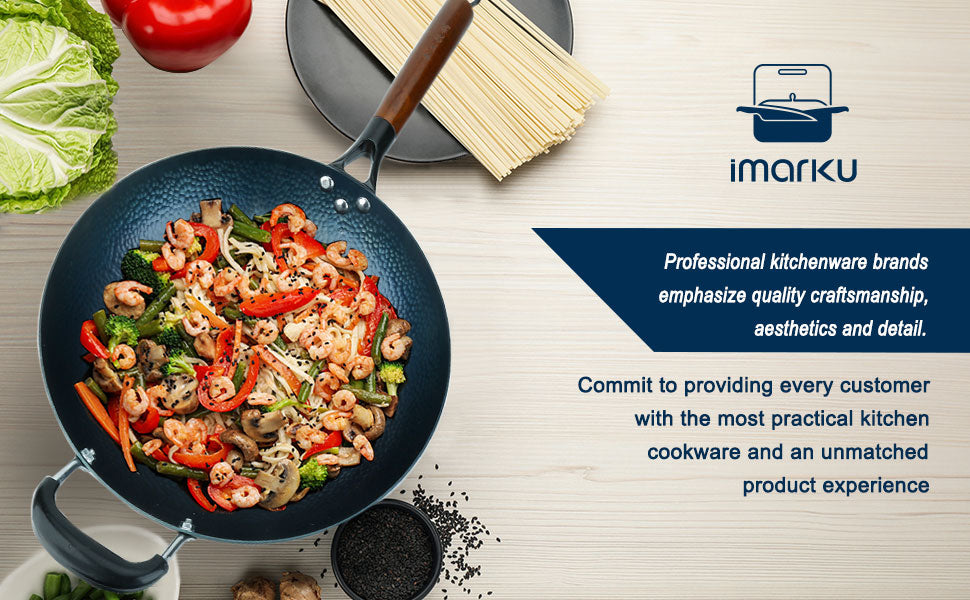
Can I Deep Fry in a Wok?
Yes, woks are fantastic for frying. Woks have a narrow base and broadsides, so they don't need much oil to cook with. It creates a beautiful pool at the bottom. Because of its generous size and layout, woks make it possible to cook food thoroughly without crowding the pan. Compared to a frying pan, the walls of a wok are taller, which helps reduce the amount of oil that splashes.
When using a wok with a circular bottom for frying, it is essential to purchase a wok ring. It prevents the wok from sliding around on the stovetop. Because of the extreme risk posed by hot oil, you need to be one hundred and ten percent certain that your wok is as steady as it can be.
You may also deep fry using a wok that has a flat bottom. Because it does not need a wok ring, it has greater stability. As opposed to using a wok with a circular base, you will need to use a little more oil. To lessen the likelihood of oil spatters, you should ensure that the meal is dry before proceeding.
When it comes to deep-frying, you'll still enjoy many of the benefits that come with using a wok. You may have to cook the food in fewer batches, but if you use the sidewalls to keep the temperature of the portions that are already done, this won't be a problem at all.
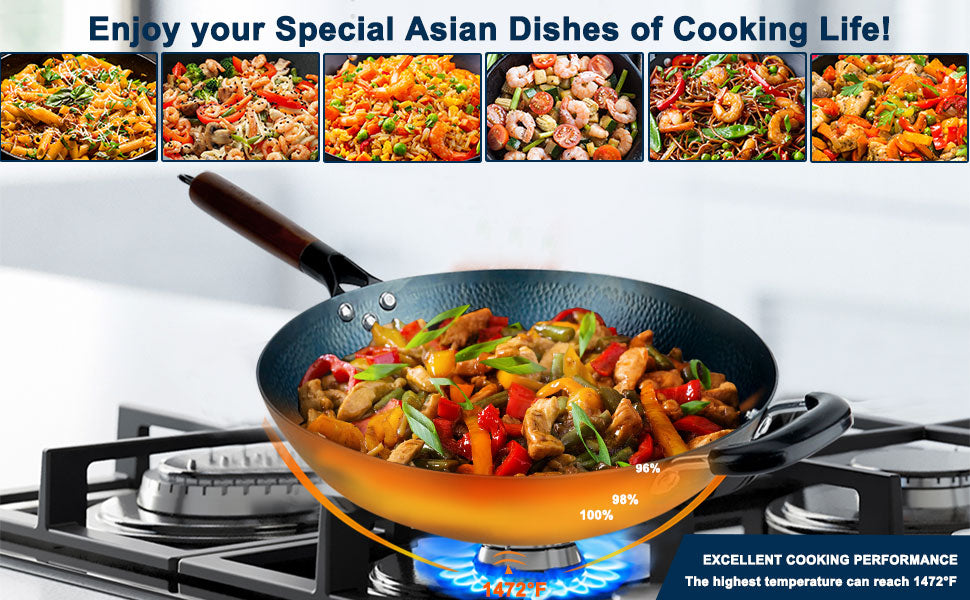
Why is a Wok Good for Deep Frying?
Because of its concave form, deep-frying in a wok uses far less oil than frying in a standard pot. Additionally, the spacious interior of the wok allows for frying a greater quantity of food at once without needing to work in many batches.
Some helpful hints for using a wok to deep fry:
- The oil should never go higher than halfway up the sides of the wok.
- You should use a deep-fry or candy thermometer to check the temperature of the oil.
- Because moisture makes oil splatter, the food that will be fried must be well dried.
- Only place a single piece of food at a time into the hot oil; otherwise, the pieces may clump together and cook unevenly.
- While wooden chopsticks are convenient for putting items into the oil, removing many pieces of fried food at once is easiest to do using a metal skimmer or strainer shaped like a spider.
Using a wok to prepare meals is a more nutritious option. During deep-frying, it requires less oil and enables food to be returned to the pan rather than falling onto the burner. It does a better job of distributing heat, which helps the cooking process go much faster.
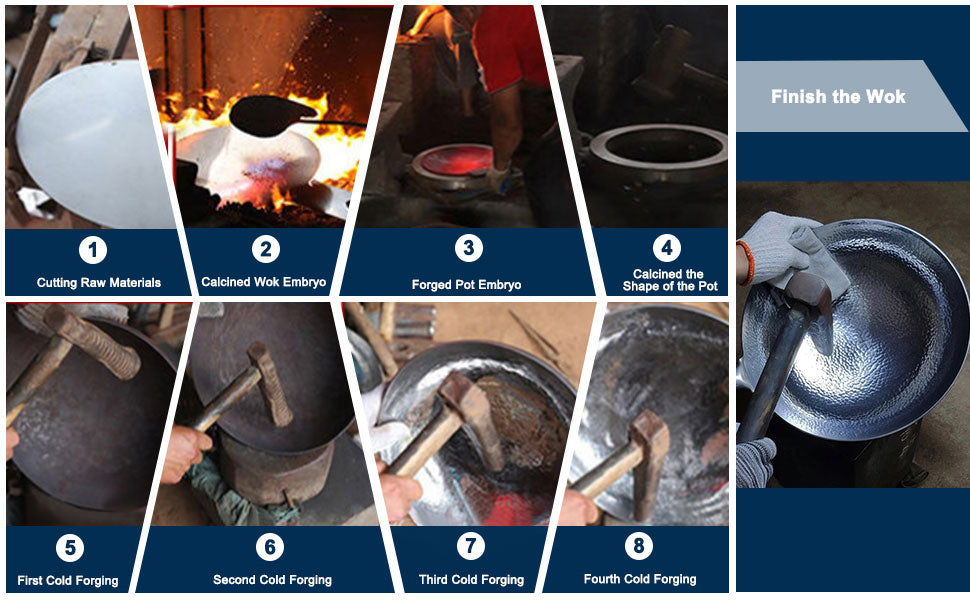
What Makes Deep-Frying in a Wok Worth Your While?
When you cook food in a wok, there is naturally less oil spatter because the high-sloped edges of the wok capture a significant portion of the sizzling. Although a cast iron skillet is one of our favorites, it is not as effective as a wok in preventing popping oil. Because of their form, woks use far less oil than other types of frying pots.
Compared to a frying pan, the cooking time with a wok is much less. It can hold more food and use less oil. In contrast to a frying pan, a wok may be seasoned, which allows for the development of a natural non-stick coating on its surface.
Woks perform better when used with gas stoves. If you do not keep the wok stirring while it is cooking at its high temperature, it will be very simple to burn the food.
The primary reason the wok is so useful is that it has a portion that can be placed over a source of direct heat and a significant amount of additional surface area that can still retain food but will not burn the food that it is holding.
The form of the wok, with its slanted sides and shallower depth, made it simpler to collect the food in both scenarios. Some oven has a deeper interior than a wok does.
And because lighter foods, like doughnuts, float to the surface as they are fried, the wider surface of the wok allowed cooks to use about 25 percent less oil while still having sufficient space to complete the task in the same number of sets. This was possible because fried pastries and other similarly lightweight foods are fried at a higher temperature.
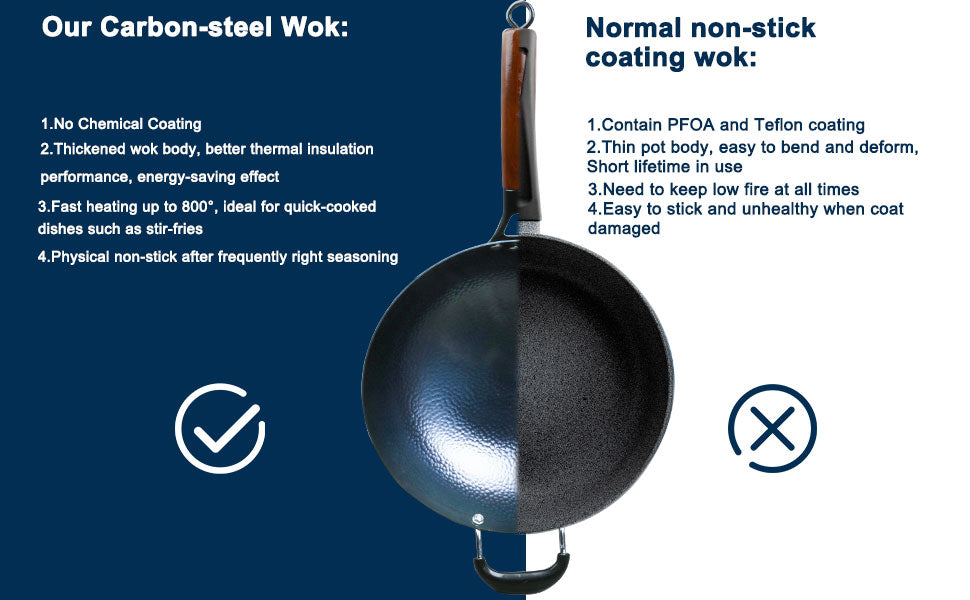
What Foods are Best to Deep Fry in a Wok?
Because of its distinctive form, the wok is particularly effective at producing wonderful golden brown morsels when used for deep frying small-portion foods (think french fries, fried chickens, calamari, shanghai, and karaage) as well as products that float (like donuts and funnel cake).
When it comes to simultaneous deep frying of many bigger things, such as chicken breasts, woks are not as perfect as other cooking vessels, but they are great for deep frying groups of smaller foods such as chicken nuggets.
This is because the form of the wok does not allow to exceed one or two big objects to be fried at the same time without the wok's walls sloping the contents into one another, which results in an uneven fry.
Some other foods you can deep fry are the following:
- Tempura
- Chicken wings
- Fish fingers
- Thai shrimps
- Potato wedges
- Fried plantains
- Deep-fried soft-crabs
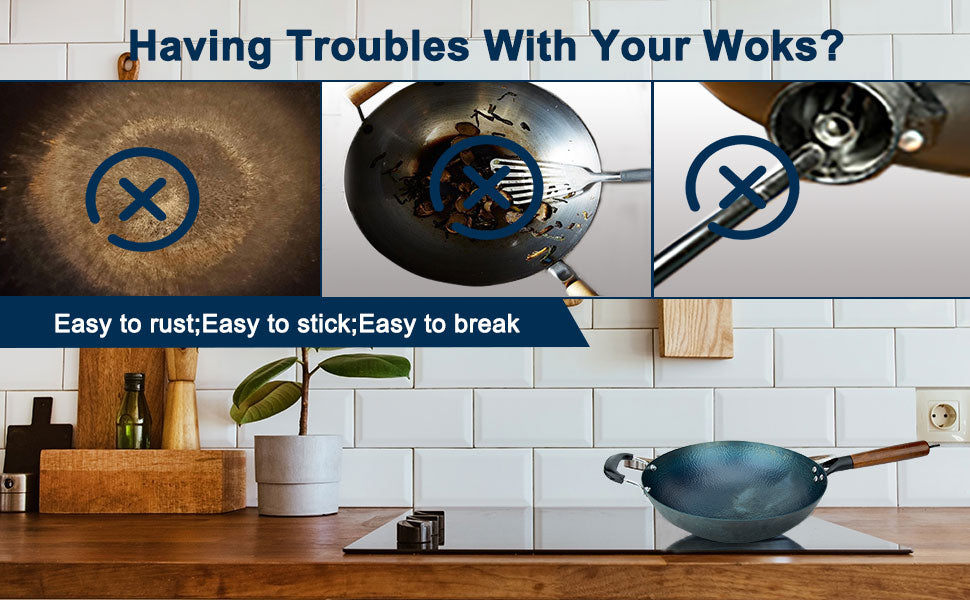
How to Deep Fry in a Wok?
Because of its flared design, a wok generates high heat at the bottom, also known as the well, which rapidly radiates to the sides. This allows both the well and the sides to be utilized for cooking items in a minimal quantity of oil that is both speedy and even.
These are some suggestions for deep-frying in a wok:
- Before adding the oil, you should always heat the wok to the point where a drop of water would evaporate upon touch. An adequately heated wok keeps food from adhering to the pan and allows for a nice sear on all sides.
- The wok is too hot if the oil smokes heavily when it is poured into the pan; a little amount of smoke, on the other hand, is acceptable.
- Do not overcrowd the wok with excessive components since this will cause the pan's temperature to drop, which in turn will cause the food to steam.
- When deep-frying, use a metal wok spatula since a wooden instrument will not be able to be sliced thinly enough to reach beneath the contents.
Wok Recommendation

12.6" Traditional Chinese Hammered Wok | Hand-Hammered | imarku
Imarku woks and stir-fry pans have been hammered with ten thousand hammers and completed with a hammer pattern. This forging process creates a micro-convex wok surface that reduces the chances of food adhering to the pan.
The Zhangqiu Chinese traditional wok is not coated in any chemical and is made of iron that has been purified to remove impurities. Compared to cast iron pots made of processed raw iron and coated cookware, it is possible to attain a safer and more stable diet using this method.

12" Iron Wok Rust Proof Carbon Steel | imarku
Compared to other types of cookware, such as cast iron pots made of untreated raw iron and coated cookware, this 12" Iron wok can produce a more secure and healthier diet.
It is possible to achieve a non-stick wok with proper seasoning and maintenance, which allows for the absorption of fat during cooking, the formation of a protective coating that becomes more non-stick with continued use, and the achievement of more flavorful outcomes while using less oil.
Read more about how to clean a wok.

Conclusion
Since frying is one of the most common cooking methods in most households, using a wok to fry food is one of the most effective ways to get more usage out of your wok. It gives food great flavor, golden brown color, and a crisp texture!
However, in contrast to a standard frying pan, this one has a concave shape, so you won't be able to stir the food around while you cook in it. This might make it more challenging to get a uniform cooking temperature.
When using a wok to fry food, many aspects of the process are comparable to cooking in a standard frying pan; nevertheless, there are also many essential differences that must be considered.



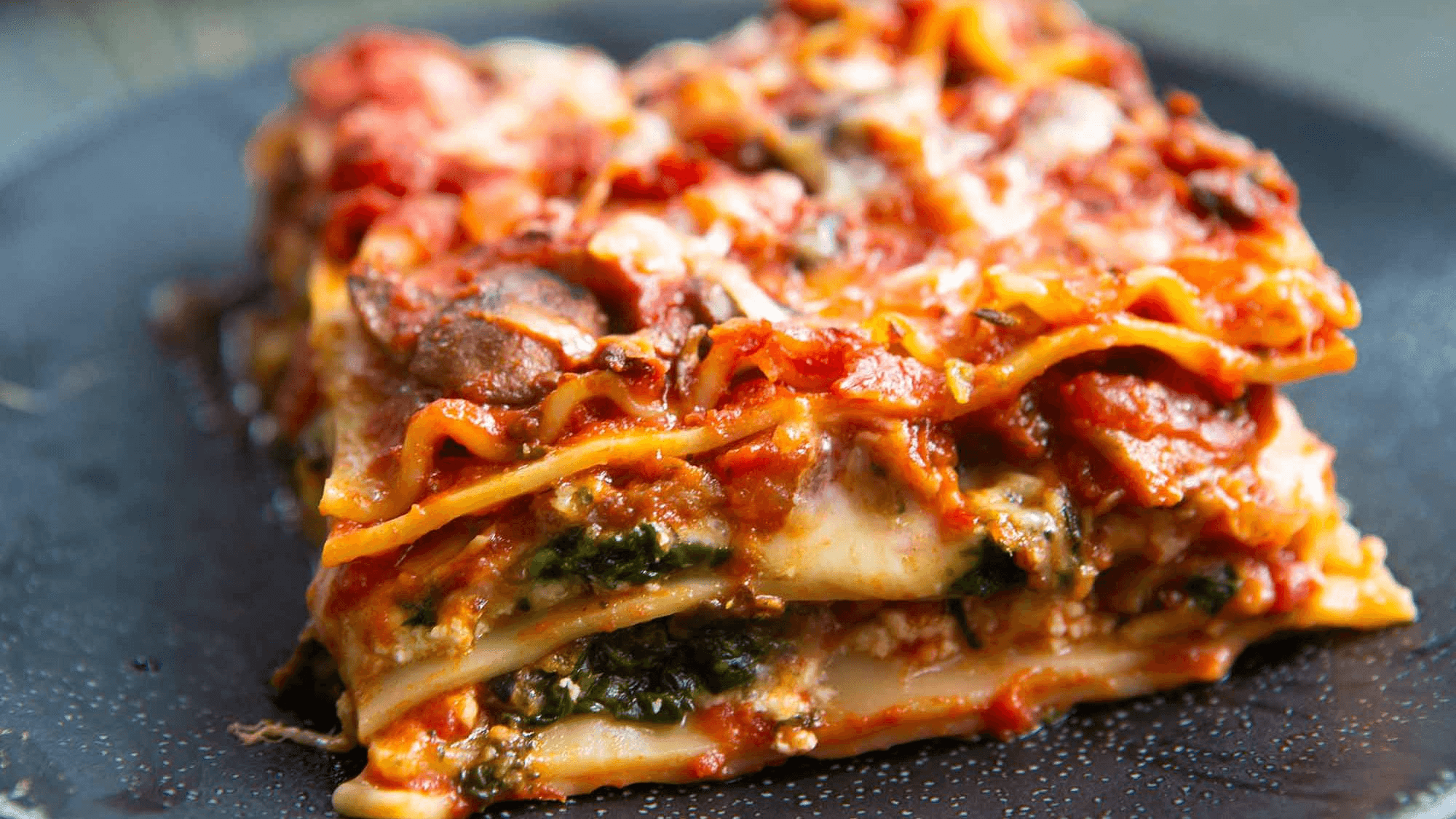
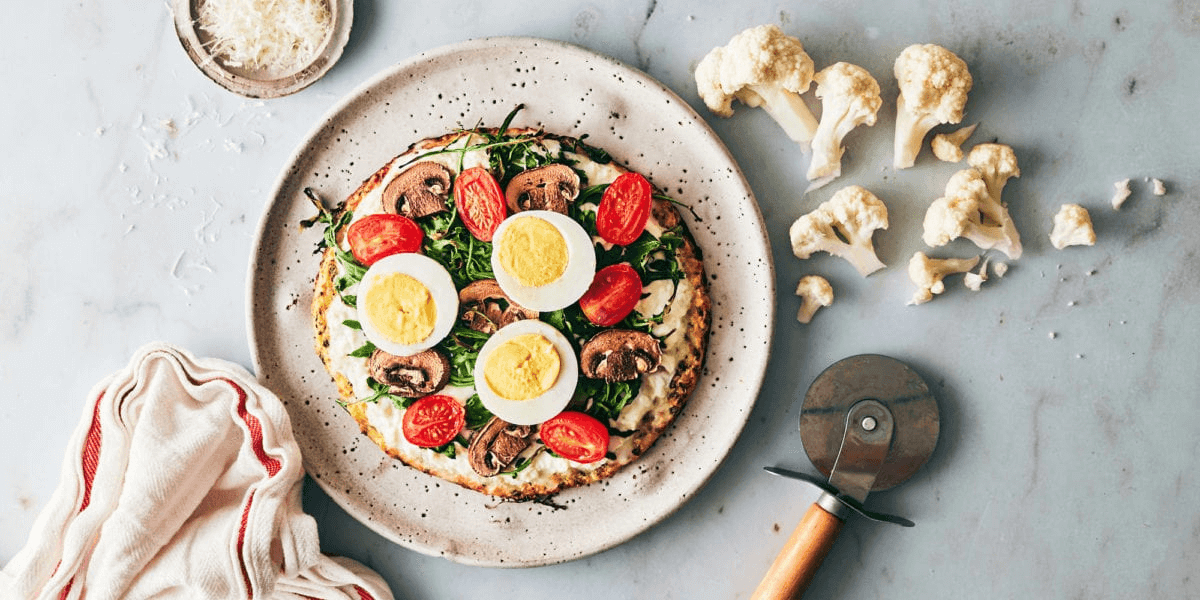

















Leave a comment
All comments are moderated before being published.
This site is protected by hCaptcha and the hCaptcha Privacy Policy and Terms of Service apply.